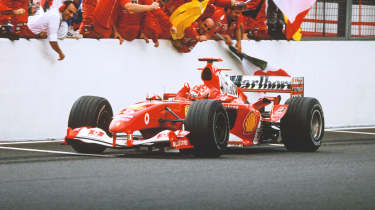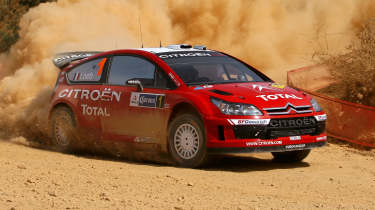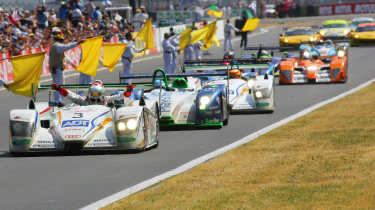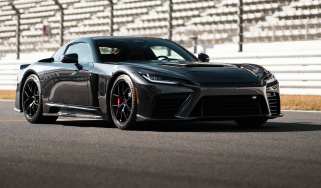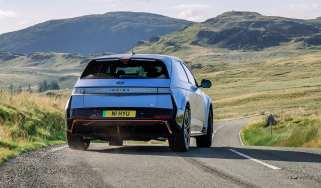Motorsport in the 2000s: An era of dominance for Ferrari and Audi
The 2000s were a period of extreme innovation in motorsport. Revs rose, technology improved exponentially and to the dominant – largely Ferrari in F1 and largely Audi at Le Mans – went the decade
So far as Grand Prix racing is concerned the noughties were all about revs. F1’s screamer era was defined by the piercing wail of V10s and caustic howl of the even higher-revving 2.4-litre V8s that followed. By the end of their development those 3-litre V10s were hitting 19,000rpm and developing almost 950bhp. The switch to 2.4-litre V8s in 2006 saw power drop but revs rise even further, Cosworth’s CA V8 famously being the first F1 engine to achieve 20,000rpm (at which speed its pistons were subjected to an accelerative force of 10,616 g!).
The rules were quickly changed in 2007 to limit revs to 19,000rpm (they would eventually drop to 18,000rpm) along with restrictions on development, but the V8s continued to race until the end of 2013. The cars were sensational, but so too were the drivers. None more than Michael Schumacher. His extraordinary run of five consecutive championship titles between 2000 and 2004 remains unequalled. Such was his and Ferrari’s level of dominance in F1, we all knew the German and Italian national anthems better than our own.
There were flashes of brilliance from other teams. Especially Williams, who revelled in the power provided by BMW’s awesome P83 V10. Juan Pablo Montoya – an incendiary talent with a zero-f***s attitude – would regularly tussle with Schumacher, while his record-breaking 162mph lap of Monza in 2004 showed his and the Williams’ blistering turn of speed.
After Schumi’s five-year lockout, the second half of the decade reads like an F1 Hall of Fame, with Fernando Alonso taking the title with Renault in ’05 and ’06, Kimi Räikkönen winning with Ferrari in ’07 (the last time the Scuderia won), a young Lewis Hamilton taking his first championship with McLaren in ’08 having come agonisingly close to winning the title in his debut season the previous year, and Jenson Button seeing out the decade with his and Brawn GP’s fairytale season in ’09.
Meanwhile in the WRC we witnessed a shift in power as Mitsubishi and Subaru ceded to French giants Peugeot and Citroën. Both Japanese marques blamed the global economic downturn for their withdrawal from the WRC, the former leaving in 2005, the latter in 2008. Peugeot was the team to beat in 2000, with Marcus Grönholm breaking Tommi Mäkinen’s streak of four back-to-back championships to take his first title with the 206 WRC. Having finished runner-up in 1999 and 2000, Richard Burns took the 2001 title in his Subaru Impreza WRC, beating Ford driver Colin McRae by two points.
Tragically, the quietly spoken but fiercely competitive Englishman would succumb to a brain tumour in 2005. Two years later his arch-rival McRae died in a helicopter crash. The loss of these two brilliant drivers left rally fans bereft and the sport missing two of its biggest stars. Grönholm would take the title in 2002, again in a Peugeot, but Subaru fought back in 2003 with Norwegian Petter Solberg securing his one and only World Drivers’ title.
From 2004 onwards the WRC was all about Sébastien Loeb and Citroën, the pairing taking the next six titles on the bounce (plus the first three of the following decade). His laser-guided driving style – more akin to a circuit racer than rally driver – might not have had much in the way of flamboyance or edge-of-the-seat drama, but his speed and consistency were awesome. Were it not for retirements, Solberg could have denied Loeb his first title in 2004 as both men won five rallies each. Ford’s Estonian ace Markko Märtin took three rally wins, with veteran Carlos Sainz (Loeb’s teammate at Citroën) and Grönholm taking solitary wins. It was a vintage season.
2005 was something of a whitewash for Loeb, but 2006 was another nailbiter, Grönholm eventually ending the season just one point behind the Frenchman after a fabulous campaign in his Ford Focus RS WRC 06. Four points separated the pair in 2007, but when the Finn retired at the end of that season Loeb’s main challenger was Ford’s Mikko Hirvonen, who would finish a relatively distant second in 2008 but came within a point of the Frenchman in 2009.
In Endurance racing the 2000s were characterised by the rise of Audi. The World Endurance Championship as we know it wasn’t formed until 2012, but as ever the Le Mans 24 Hours was the race to win. Audi duly did just that, scoring its first Le Mans victory in 2000 and taking seven more before the end of the decade. Audi’s concentrated record of success was unprecedented. A debut podium finish in 1999 with the closed-cockpit R8R paved the way for a crushing demonstration of technical and financial superiority throughout the noughties.
Using Le Mans to showcase upcoming road car technology was nothing new, but Audi’s commitment to racing with new powertrain technology was unique. After dominating the first half of the decade with its Gasoline Direct Injection V8-engined R8, Audi Sport switched to the monster R10 TDI, which ran a 5.5-litre V12 TDI diesel engine developing 650bhp and more than 800lb ft of torque. Super-fast and running longer stints due to improved fuel efficiency – the holy grail of endurance racing – these whispering monsters won Le Mans in 2006 (the first diesel to do so), 2007 and 2008.
Only Bentley – who had VW Group backing – and Peugeot – whose equally fearsome V12-engined diesel racers went toe-to-toe with Audi towards the end of the decade – broke Audi’s stranglehold with wins in 2003 and 2009. Most remarkable of all, Danish ace Tom Kristensen won Le Mans seven times in the decade, including six in a row.
